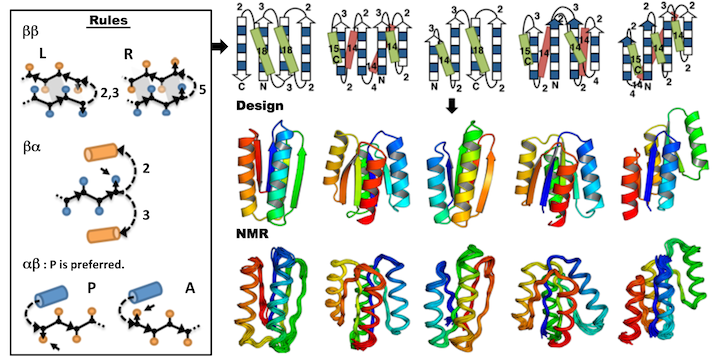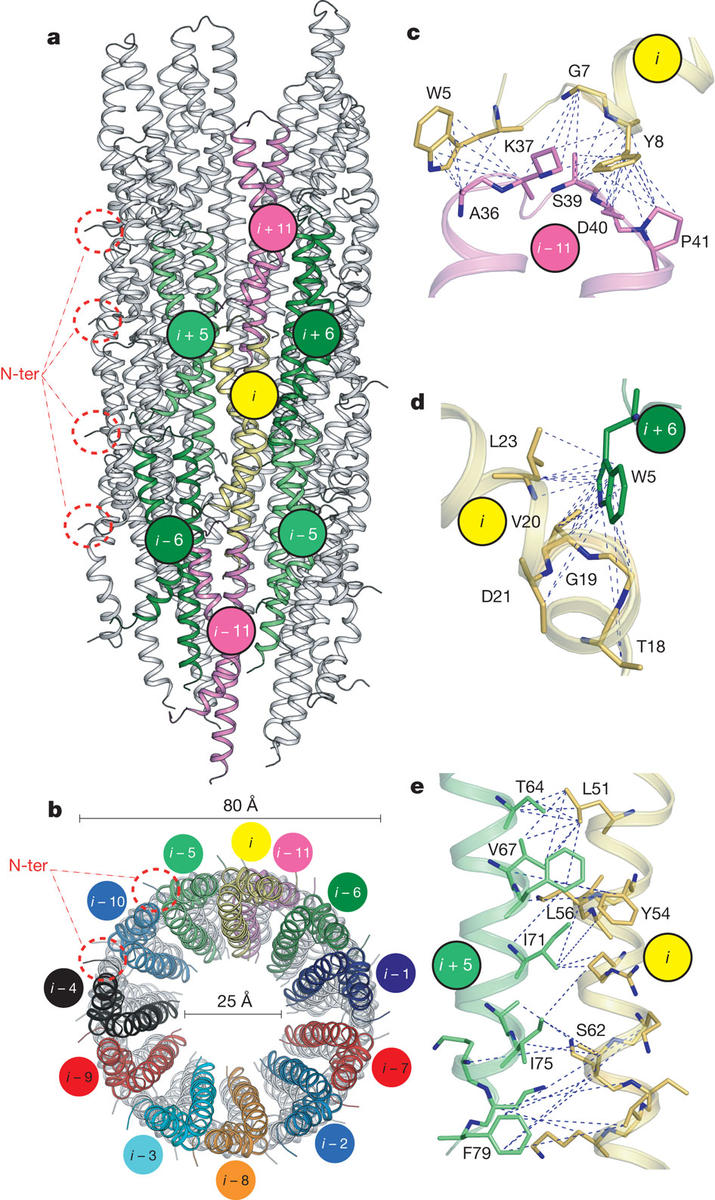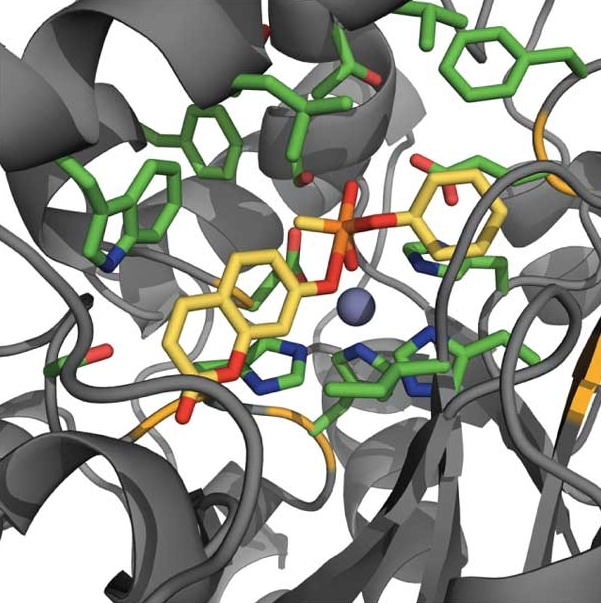Tag: protein design
-

Proof of principle for epitope-focused vaccine design
Correia, B.E. et al. Nature 507, 201-6 (2014) Vaccines prevent infectious disease largely by inducing protective neutralizing antibodies against vulnerable epitopes. Several major pathogens have resisted traditional vaccine development, although vulnerable epitopes targeted by neutralizing antibodies have been identified for several such cases. Hence, new vaccine design methods to induce epitope-specific neutralizing antibodies are needed.…
-

Computational design of ligand-binding proteins with high affinity and selectivity
Tinberg, C.E., Khare, S.D., et al. Nature. 501(7466), 212-216. (2013) We describe a computational approach for designing proteins that bind small molecules and use it to create binders for digoxin, a steroid toxin deriving from the foxglove plant. The method relies on the explicit design of highly energetically favorable interactions with the ligand. Directed laboratory evolution…
-
Computational design of an α-gliadin peptidase
Gordon, S.R., Stanley, E.J., et al. J Am Chem Soc. 134(50), 20513-20520. (2012) The ability to rationally modify enzymes to perform novel chemical transformations is essential for the rapid production of next-generation protein therapeutics. Here we describe the use of chemical principles to identify a naturally occurring acid-active peptidase, and the subsequent use of computational…
-

PRINCIPLES FOR DESIGNING IDEAL PROTEIN STRUCTURES
Koga, N., Tasumi-Koga R., et al., Nature. 491(7423), 222-227. (2012) We describe an approach to designing ideal protein structures stabilized by completely consistent local and non-local interactions. The approach is based on a set of rules relating secondary structure patterns to protein tertiary motifs, which make possible the design of strongly funneled protein folding energy…
-

Computational Design of Self-Assembling Protein Nanomaterials with Atomic Level Accuracy
King, N.P., Sheffler, W., et al. Science. 336(6085), 1171-1174. (2012) We describe a general computational method for designing proteins that self-assemble to a desired symmetric architecture. Protein building blocks are docked together symmetrically to identify complementary packing arrangements, and low-energy protein-protein interfaces are then designed between the building blocks in order to drive self-assembly. Here…
-

Atomic model of the type III secretion system needle
Loquet, A., Sgourakis N. G., et al. Nature (2012) The ability of Gram-negative bacteria, such as the agents of plague, dysentery and typhoid fever to infect host cells is dependent on a syringe-like molecular machine known as the Type-III secretion system (T3SS). The core of T3SS consists of a hollow filament, the needle; composed of…
-

Optimization of affinity, specificity and function of designed influenza inhibitors using deep sequencing
Whitehead, T. A., Chevalier A. et al. Nature biotechnology (2012) We show that comprehensive sequence-function maps obtained by deep sequencing can be used to reprogram interaction specificity and to leapfrog over bottlenecks in affinity maturation by combining many individually small contributions not detectable in conventional approaches. We use this approach to optimize two computationally designed…
-

Computational redesign of a mononuclear zinc metalloenzyme for organophosphate hydrolysis
Khare, S. D., Kipnis Y., et al. Nature chemical biology (2012) The ability to redesign enzymes to catalyze noncognate chemical transformations would have wide-ranging applications. We developed a computational method for repurposing the reactivity of metalloenzyme active site functional groups to catalyze new reactions. Using this method, we engineered a zinc-containing mouse adenosine deaminase to…